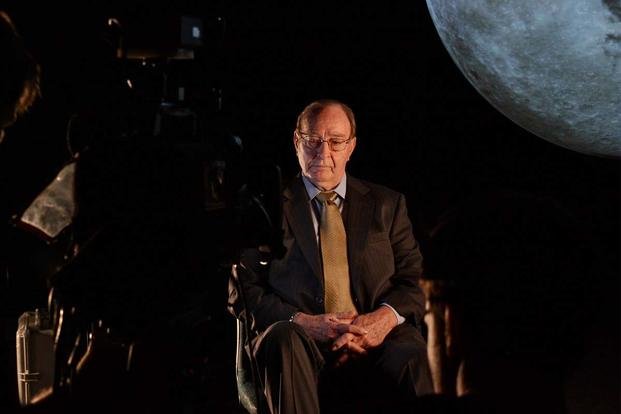Only 12 people can say for sure what the Earth looks like from the lunar surface. But only one of them is on record as believing aliens averted a nuclear war between the United States and the Soviet Union to keep humans from destroying themselves.
Astronaut Edgar Mitchelll is best known for typing in 80 lines of code to save the entire Apollo 14 mission as it descended to the moon in 1971. But he also claimed that top military officials had hidden evidence of UFOs, potentially alien spacecraft, and that they were particularly fond of hovering over White Sands Testing Range in New Mexico.
Growing up in New Mexico had given him a unique insight to the area, he told the UK’s Mirror in 2015.
"White Sands was a testing ground for atomic weapons - and that's what the extraterrestrials were interested in… They wanted to know about our military capabilities. My own experience talking to people has made it clear the ETs had been attempting to keep us from going to war and help create peace on Earth."
Mitchell also told the Mirror that other military personnel had confided in him that alien spacecraft were responsible for disabling nuclear missiles and for shooting them down over the Pacific Coast.
He started talking publicly about his less mainstream beliefs in 1973, just two years after landing on the moon, when he abruptly left NASA, divorced his wife and founded the Institute for Noetic Sciences. He used that as a platform to discuss exploring new worlds in ways separate from known science or religion. He became convinced that extraterrestrial life had been visiting Earth and helping humanity along a more spiritual path.
Mitchelle began to form his metaphysical and extraterrestrial beliefs during his training as an aviator, but he wasn’t known as a kook or prone to making wild statements. He was one of the U.S. military’s most able and brilliant pilots. NASA would recognize this potential as well, giving Mitchell the chance to live the dream he’d had since President John F. Kennedy challenged the United States to land a man on the moon.
When Kennedy announced the Space Program’s goal to reach the moon in 1961, Mitchell was ready to go.
“That's what I wanted, because it was the bear going over the mountain to see what he could see, and what could you learn,” he said. “I've been devoted to that, to exploration, education and discovery since my earliest years, and that's what kept me going.”

Mitchell spent much of his adult life in the U.S. Navy. He was a Naval Aviator before attending the Navy’s postgraduate school. He then became a Navy research pilot and earned a PhD in aeronautics and astronautics from the Massachusetts Institute of Technology. He eventually attended the U.S. Air Force Research pilot school to become a test pilot. While he was working to graduate first in his class as a test pilot, he was instructing astronauts in mathematics and navigation.
In 1966, just 13 years after enlisting, he became a NASA astronaut. He was in the rotation for Apollo missions 9 and 10, and was supposed to go up with ill-fated Apollo 13. But it was during Apollo 14 that Edgar Mitchell was finally able to set foot on the moon’s surface.
While coming back to Earth, he finally had a moment to take in the view. To see Earth from outside changed the way he saw himself and humanity. In a 2016 interview with VICE, he called it “powerful… overview effect.”
"From looking at Earth from space you come up with the question, who are we, how did we get here and where's all this going? And that's an ancient, ancient question that humans have asked for a long time… My experience was to realize that perhaps our science is wrong at answering these questions and perhaps our religious cosmologies are archaic and flawed. And given that now we are an extraterrestrial civilization ourselves, we need to re-ask these questions, and do a lot more work to find the answers."
The once-enlisted sailor who became the 6th human on the moon died in 2016 at age 85.
-- Blake Stilwell can be reached at blake.stilwell@military.com. He can also be found on Twitter @blakestilwell or on Facebook.
Want to Learn More About Military Life?
Whether you're thinking of joining the military, looking for post-military careers or keeping up with military life and benefits, Military.com has you covered. Subscribe to Military.com to have military news, updates and resources delivered directly to your inbox.










